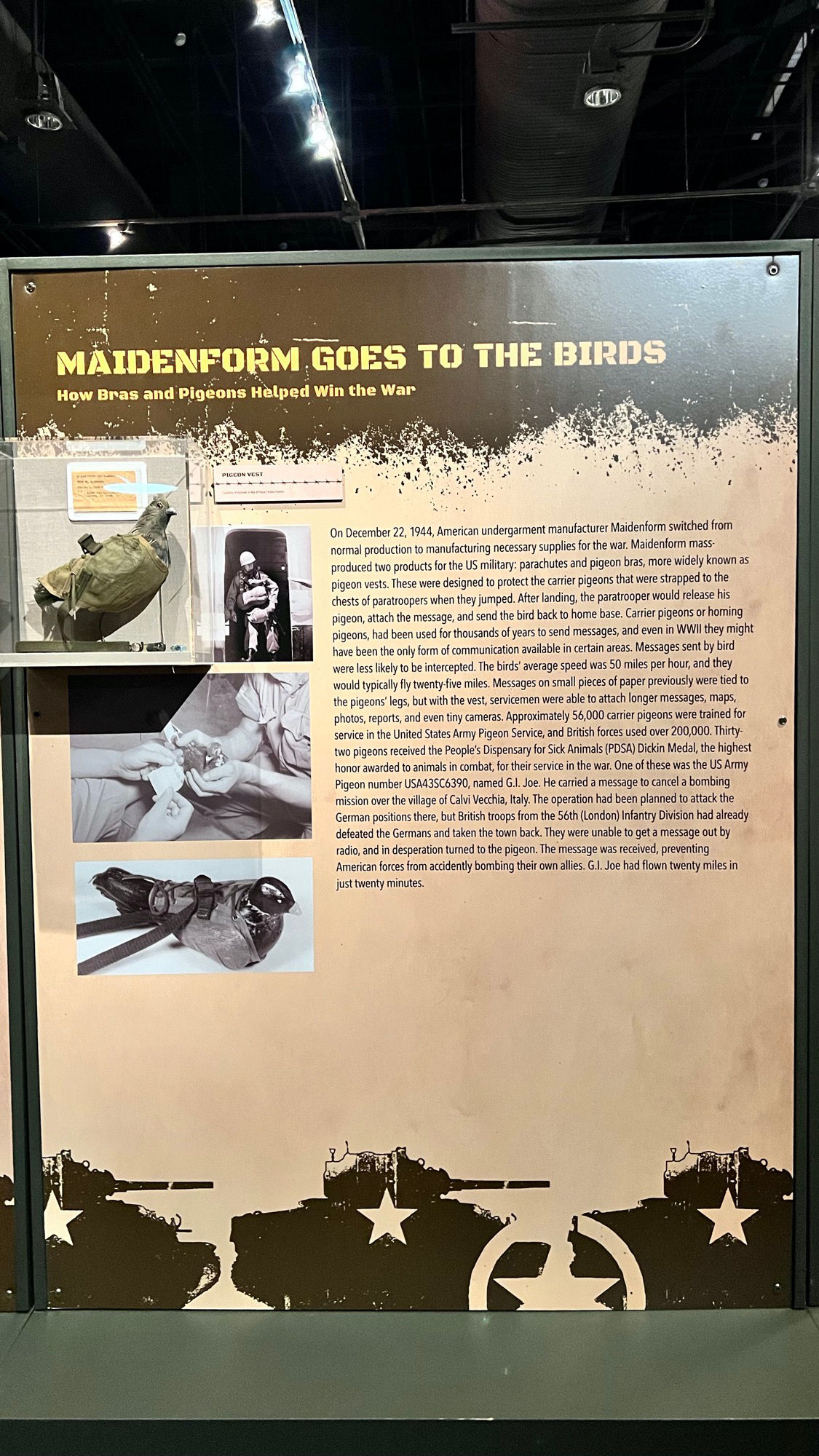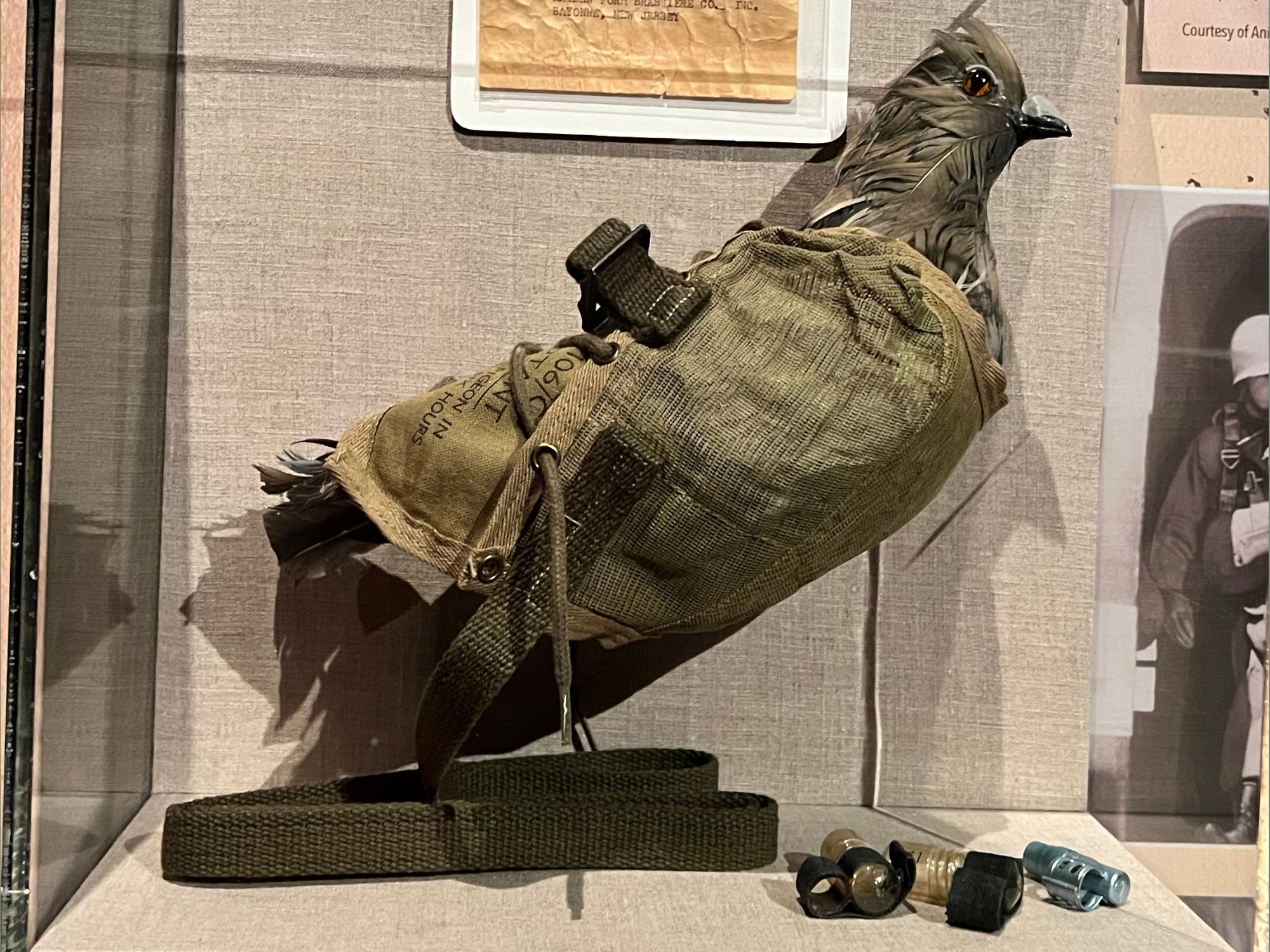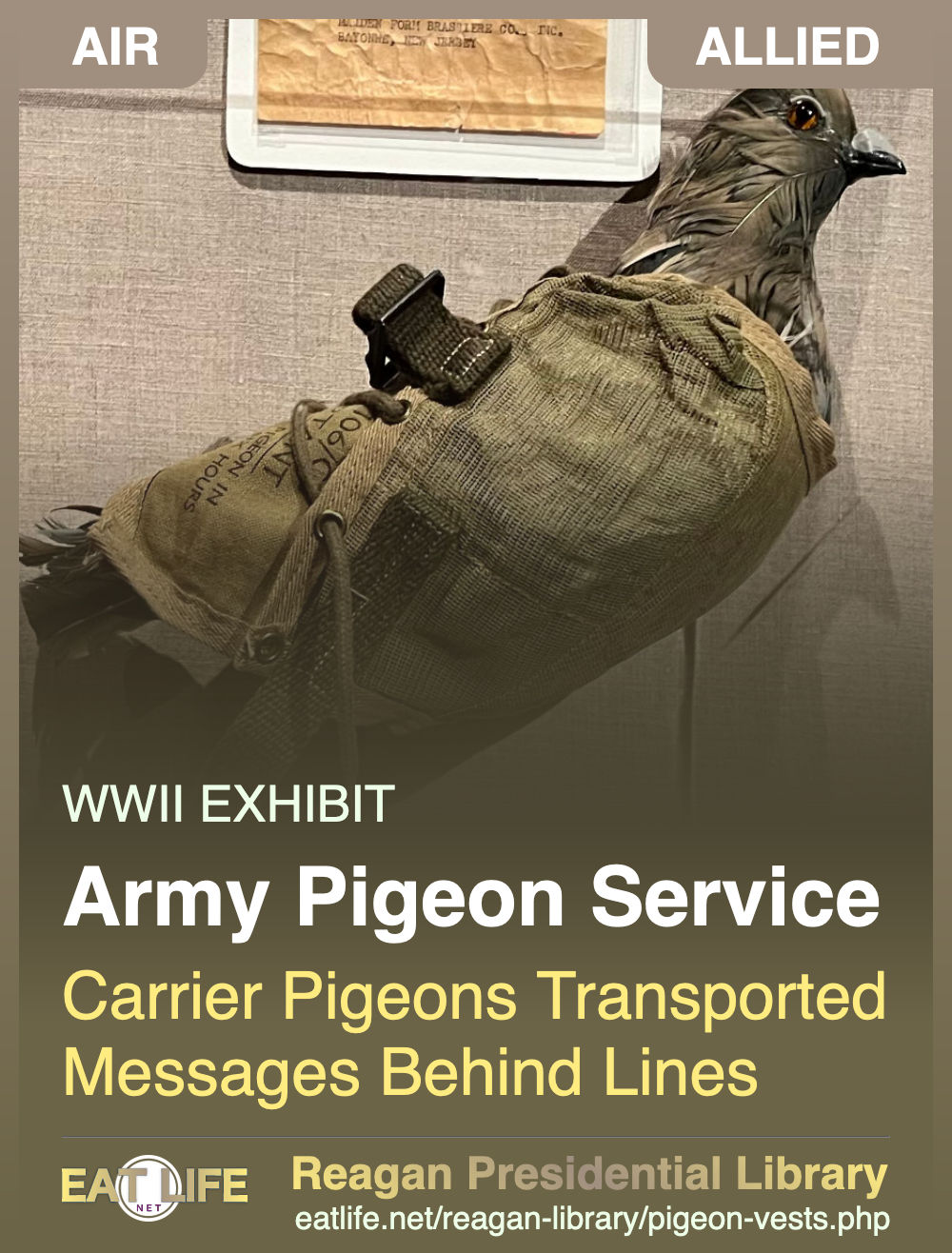A carrier pigeon could be strapped to the chest of paratrooper when he jumped. After landing, the paratrooper would attach a message to a canister on the pigeon's leg, then release the pigeon, and it would find its way back to home base. Behind enemy lines in WWII pigeons might have been the only form of communication available in certain areas. Approximately 56,000 carrier pigeons were trained for service in the United States Army Pigeon Service, and British forces used over 200,000.

How Bras and Pigeons Helped Win the War
On December 22, 1944, American undergarment manufacturer Maidenform switched from normal production to manufacturing necessary supplies for the war. Maidenform mass-produced two products for the US military: parachutes and pigeon bras, more widely known as pigeon vests.
These were designed to protect the carrier pigeons that were strapped to the chests of paratroopers when they jumped.
After landing, the paratrooper would release his pigeon, attach the message, and send the bird back to home base.
Carrier pigeons or homing pigeons, had been used for thousands of years to send messages, and even in WWII they might have been the only form of communication available in certain areas.
- Messages sent by bird were less likely to be intercepted.
- The birds average speed was 50 miles per hour, and they would typically fly twenty five miles.
- Messages on small pieces of paper previously were tied to the pigeons' legs, but with the vest, servicemen were able to attach longer messages, maps, photos, reports, and even tiny cameras.
- Approximately 56,000 carrier pigeons were trained for service in the United States Army Pigeon Service, and British forces used over 200,000.

Leg Canisters
WIKIPEDIAG.I. Joe
March 24, 1943 – June 3, 1961
was a pigeon noted for his service in the United States Army Pigeon Service. The bird is part of the homing pigeons used during World War I and World War II for communication and reconnaissance purposes. G.I. Joe had the name tag, Pigeon USA43SC6390. He was hatched in March 1943, in Algiers, North Africa and underwent a training for two-way homing pigeons perfected at Fort Monmouth, in New Jersey.During the Italian Campaign of World War II, G.I. Joe saved the lives of the inhabitants of the village of Calvi Vecchia, Italy, and of the British troops of 56th (London) Infantry Division occupying it.
PIGEON GI JOEAir support had been previously requested against German positions at Calvi Vecchia on 18 October 1943. However, the 169th (London) Infantry Brigade attacked and won back the village from the Germans ahead of schedule but they were unable to transmit a message via radio to call off the planned American air raid. G.I. Joe was dispatched as a last resort to carry the message and arrived in the air base just in time to avoid the Allied air force from bombing their own men. G.I. Joe flew this 20-mile distance in an impressive 20 minutes, just as the planes were preparing to take off for the target. Over 100 men were saved.On 4 November 1946, G.I. Joe was presented the Dickin Medal for gallantry by Major-General Charles Keightley at the Tower of London. The citation credits him with "the most outstanding flight made by a United States Army homing pigeon in World War II". The award is also known as the equivalent of the Victoria Cross or the Medal of Honor for animals. G.I. Joe was the 29th and the first non-British recipient of the medal.
In 2019 he was also posthumously awarded the Animals in War & Peace Medal of Bravery.
After World War II, he was housed at the U.S. Army's Churchill Loft at Fort Monmouth, in New Jersey along with 24 other heroic pigeons. He died at the Detroit Zoological Gardens at the age of eighteen, and was mounted and displayed at the U.S. Army Communications Electronics Museum at Fort Monmouth.
WIKIPEDIAHoming pigeons have long played an important role in war
Due to their homing ability, speed, and altitude, they were often used as military messengers. Carrier pigeons of the Racing Homer breed were used to carry messages in World War I and World War II, and 32 such pigeons were presented with the Dickin Medal. Medals such as the Croix de Guerre, awarded to Cher Ami, and the Dickin Medal awarded to the pigeons G.I. Joe and Paddy, amongst 32 others, have been awarded to pigeons for their services in saving human lives.During World War I and World War II, carrier pigeons were used to transport messages back to their home coop behind the lines. When they landed, wires in the coop would sound a bell or buzzer and a soldier of the Signal Corps would know a message had arrived. The soldier would go to the coop, remove the message from the canister, and send it to its destination by telegraph, field phone, or personal messenger.
A carrier pigeon's job was dangerous. Nearby, enemy soldiers often tried to shoot down pigeons, knowing that released birds were carrying important messages. Some of these pigeons became quite famous amongst the infantrymen for whom they worked. One pigeon, named "Spike", flew 52 missions without receiving a single wound. Another, named Cher Ami, lost his foot and one eye, but his message got through, saving a large group of surrounded American infantrymen.
During World War II, the United Kingdom used about 250,000 homing pigeons for many purposes, including communicating with those behind enemy lines such as Belgian spy Jozef Raskin. The Dickin Medal, the highest possible decoration for valor given to animals, was awarded to 32 pigeons, including the United States Army Pigeon Service's G.I. Joe and the Irish pigeon Paddy.
The UK maintained the Air Ministry Pigeon Section during World War II and for a while thereafter. A Pigeon Policy Committee made decisions about the uses of pigeons in military contexts. The head of the section, Lea Rayner, reported in 1945 that pigeons could be trained to deliver small explosives or bioweapons to precise targets. The ideas were not taken up by the committee, and in 1948 the UK military stated that pigeons were of no further use. During the war, messenger pigeons could draw a special allowance of corn and seed, but as soon as the war ended this had been cancelled and anyone keeping pigeons would have to draw on their own personal rationed corn and seed to also feed the pigeons. However, the UK security service MI5 was still concerned about the use of pigeons by enemy forces. Until 1950, they arranged for 100 birds to be maintained by a civilian pigeon fancier in order to prepare for any eventuality. The Swiss army disbanded its Pigeon section in 1996.








